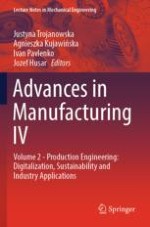This book describes cutting-edge research and technologies aimed at increasing the efficiency of production processes and supporting the implementation of Industry 4.0 and Industry 5.0 solutions in production. Gathering peer-review contributions to the 8th International Scientific-Technical Conference MANUFACTURING 2024, held on May 14–16, 2024, in Poznan, Poland, it reports on research on and applications of artificial intelligence and digital technologies to improve the production process. It also presents augmented/virtual and mixed reality tools that can be used or have been tested in the manufacturing industry and for education and training purposes. Last but not least, it highlights cutting-edge solutions for green and sustainable production. Offering a timely, practice-oriented reference guide for both researchers and practitioners in manufacturing, this book is also intended to bridge the gap between university and industry, fostering a closer communication and cooperation between them
